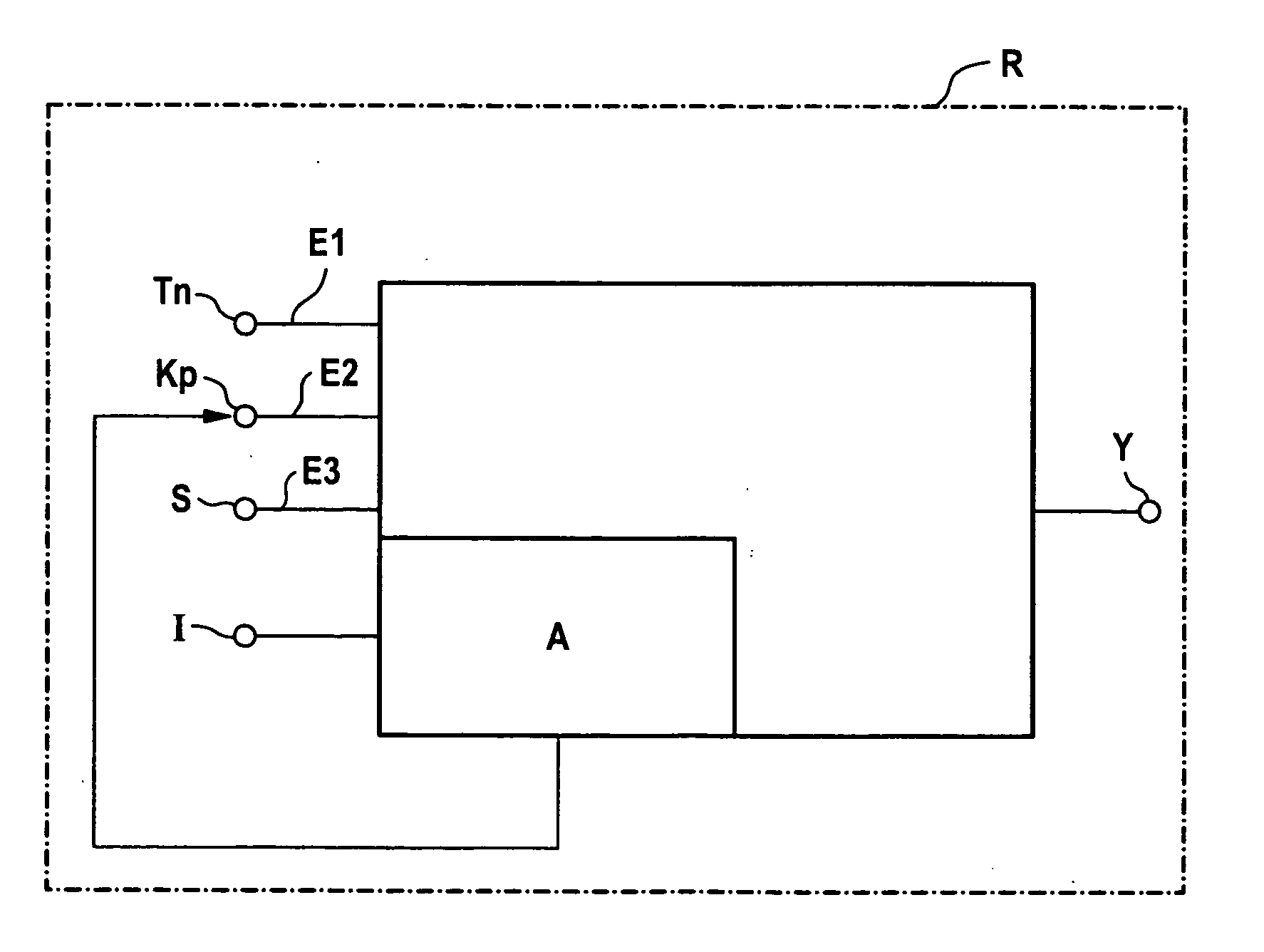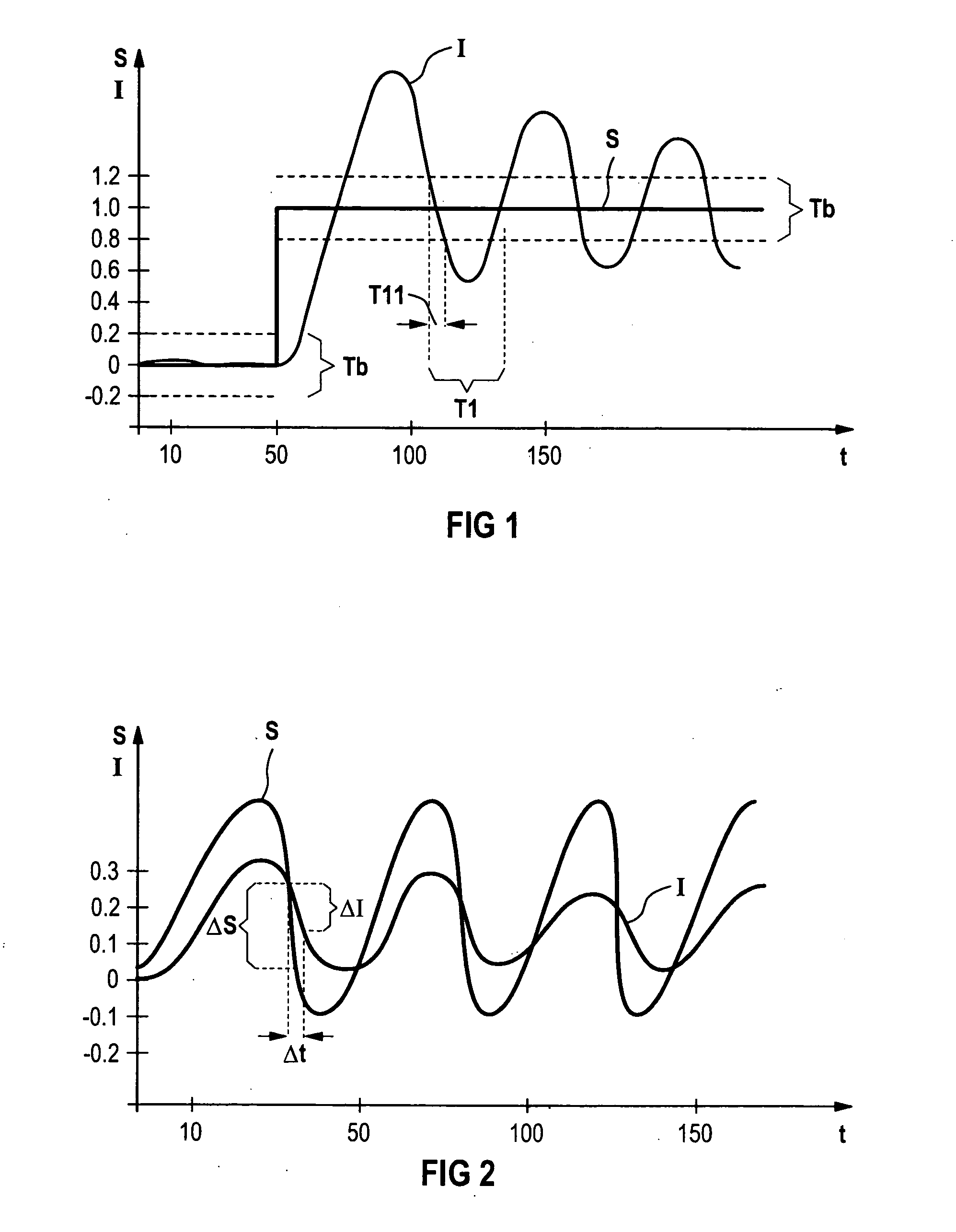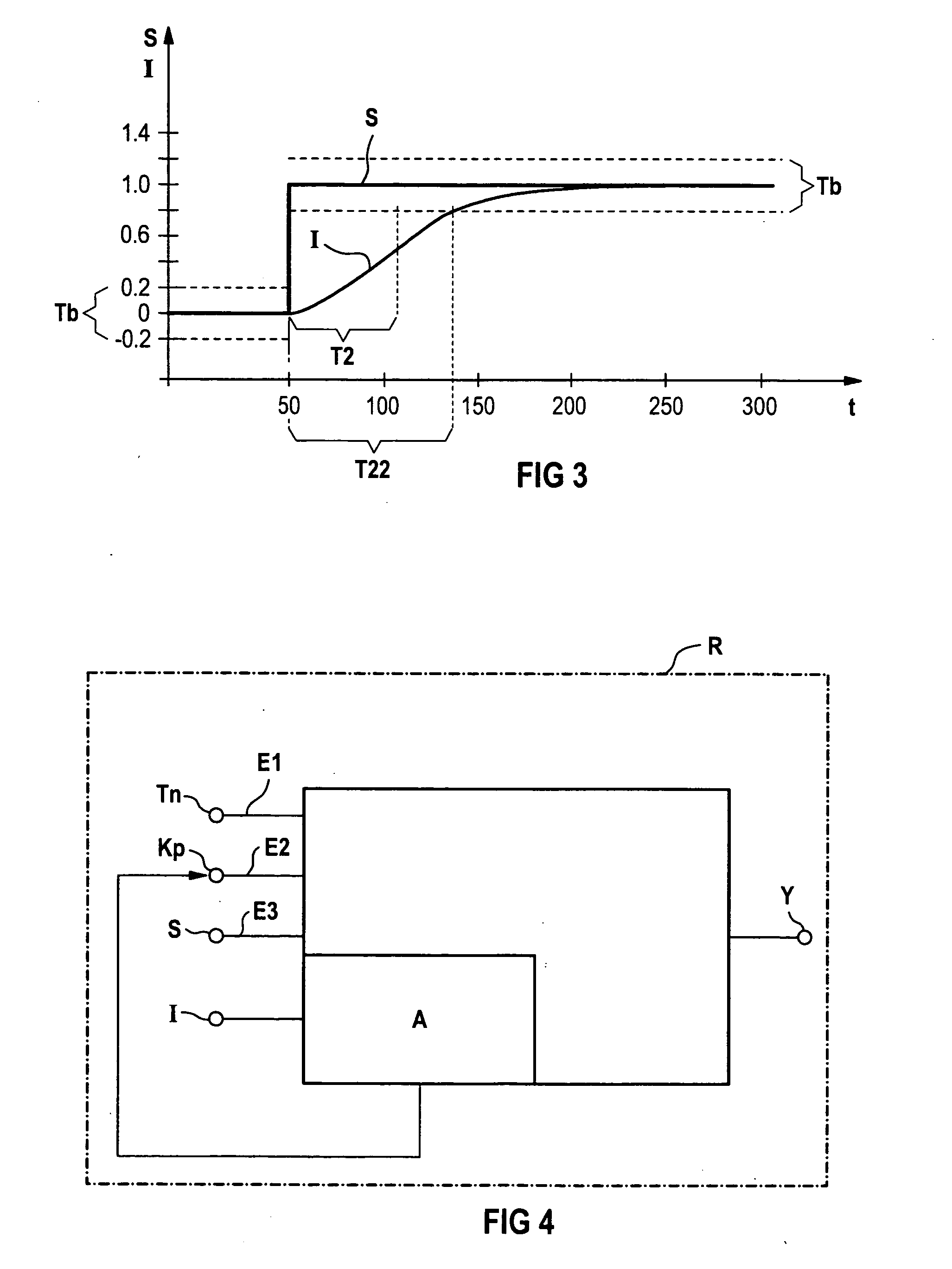Method and controller for the adaptive control of at least one component of a technical plant
- Summary
- Abstract
- Description
- Claims
- Application Information
AI Technical Summary
Benefits of technology
Problems solved by technology
Method used
Image
Examples
Embodiment Construction
[0046]FIG. 1 show an example of the time response of an actual value I, that has an oscillation and even over a long time period does not satisfactorily approximate to a defined set value S, and thus in particular does not move within a tolerance band Tb.
[0047] The illustration in FIG. 1 shows the time behavior of the set and actual values of a controlled component of a technical plant. At time point t=50 (for example t=50 sec.), the set value S changes suddenly from S=0 to S=1 and remains constant from time point t=50. With a controlled system, it is desirable for the actual value I of the associated control variable to follow the time response of the set value S as closely as possible, whereby on one hand the set value S should be reached as quickly as possible and on the other hand excessive over- or undershoots of the actual value I relative to the set value S must be avoided in order to obtain a stable controlled system. In particular, oscillations of the actual value I that d...
PUM
 Login to View More
Login to View More Abstract
Description
Claims
Application Information
 Login to View More
Login to View More - R&D
- Intellectual Property
- Life Sciences
- Materials
- Tech Scout
- Unparalleled Data Quality
- Higher Quality Content
- 60% Fewer Hallucinations
Browse by: Latest US Patents, China's latest patents, Technical Efficacy Thesaurus, Application Domain, Technology Topic, Popular Technical Reports.
© 2025 PatSnap. All rights reserved.Legal|Privacy policy|Modern Slavery Act Transparency Statement|Sitemap|About US| Contact US: help@patsnap.com



